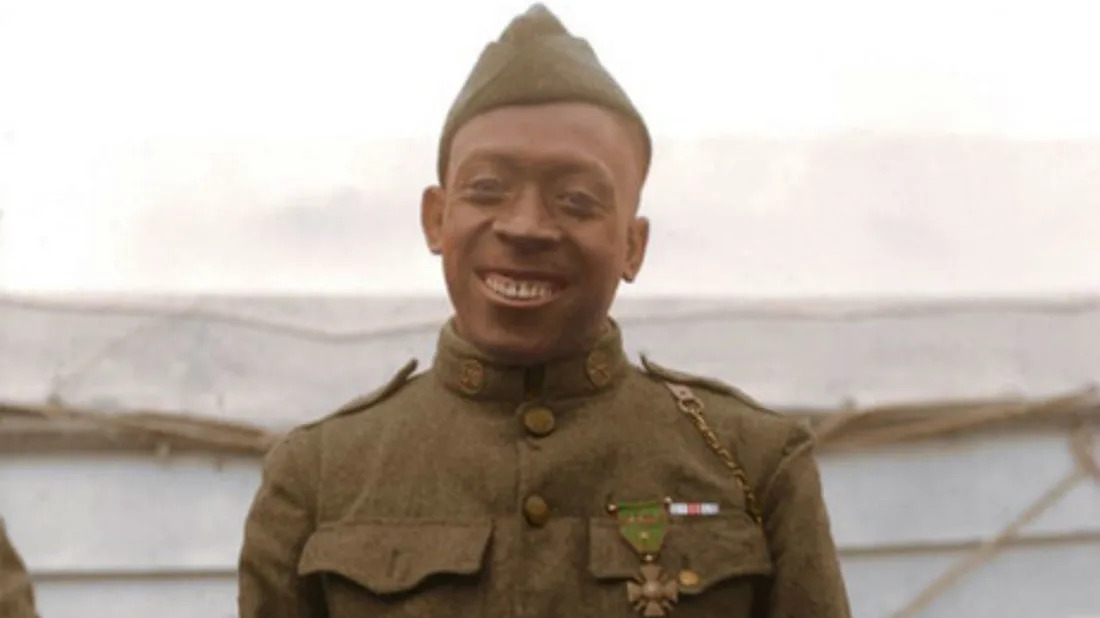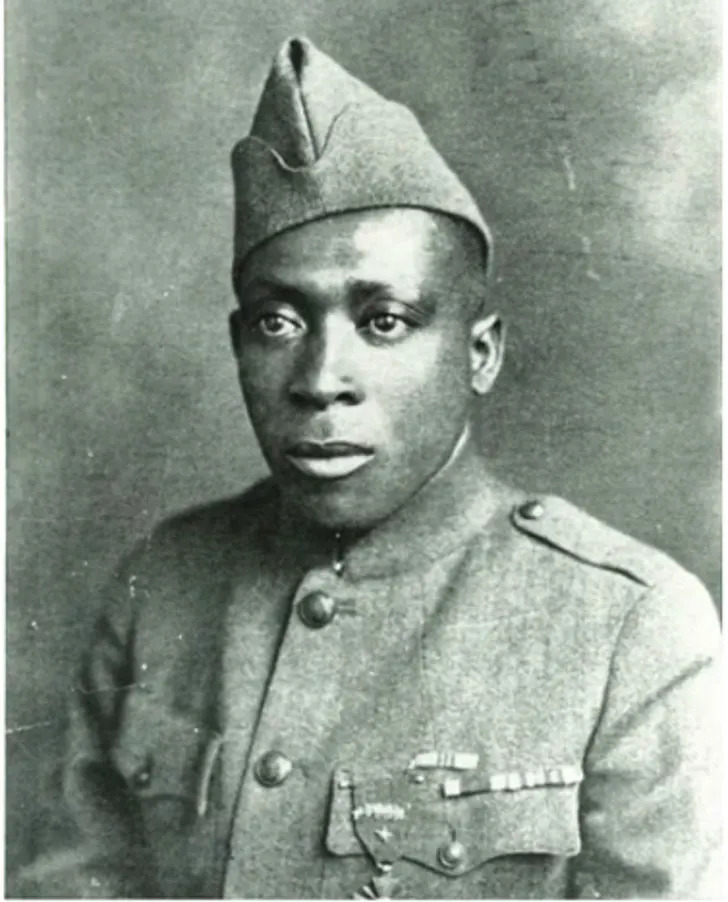NewsVine_Mariyam
Platinum Member
I was completely unaware of this bit of history
Henry Johnson, the One-Man Army Who Fought Off Dozens of German Soldiers During World War I
The rest of the story here:In May 1918, Henry Johnson found himself alone in the Argonne with a wounded ally, an empty rifle, and dozens of German soldiers closing in. He didn’t run. He fought.

Photo from the New York State Military Museum // Public Domain.
It was after midnight on May 15, 1918 when William Henry Johnson began to hear the rustling. Johnson was a long way from his home in Albany, New York, guarding a bridge in the Argonne Forest in Champagne, France. Sleeping next to him was Needham Roberts, a fellow soldier. Both men had enlisted in the New York National Guard just a few months earlier and were now part of the French Army, donated by U.S. forces to their understaffed allies in the thick of World War I.
As Johnson continued hearing the strange noises late into the night, he urged his partner to get up. A tired Roberts waved him off, believing Johnson was just nervous. Johnson decided to prepare himself just in case, piling up his assortment of grenades and rifle cartridges within arm's reach. If someone was coming, he would be ready.
The rustling continued. At one point, Johnson heard a clipping noise—what he suspected was the sound of the perimeter fence being cut. He again told Roberts to wake up. "Man," he said, "You better wake up pretty soon or you [might] never wake up."
The two began lobbing grenades into the darkness, hoping to discourage whoever might be lurking around the perimeter. Suddenly, in the middle of the French forest, Johnson saw dozens of German soldiers come charging, bayonets pointed toward him. They began to fire.
What transpired over the next hour would become an act of heroism that prompted former President Theodore Roosevelt to declare Johnson one of the bravest Americans to take up arms in the war. Johnson would even lead a procession back in New York City, with crowds lined up along the street to greet him.
Johnson may or may not have felt like a hero, though he certainly was. But he must have also felt something else—a sense of confusion. A man of color, he had been dispatched to a segregated regiment, where he received paltry combat training and was assigned menial tasks like unloading trucks. Even his homecoming parade was split up according to race. Henry Johnson, decorated virtually head to toe in French military honors, returned to a country that considered him both hero and a second-class citizen.
* * *
Though officers would later verify much of Johnson’s account of that night in the woods, his early life is harder to pin down. It has been reported that Johnson himself wasn’t quite sure when he was born. No one appeared to have kept a close eye on his birth certificate, which came out of Winston-Salem, North Carolina. The official U.S. Army website honoring Johnson’s service lists an approximate birth date of July 15, 1892. Other research indicates he could have been born as early as 1887 or as late as 1897.
After moving to New York as a teenager, Johnson took on an assortment of odd jobs; he was a chauffeur and a soda mixer, among other occupations. Depending on the account, he was living in Albany working either in a coal yard or as a railway porter when he opened a newspaper in the spring of 1917 and read that the 15th New York Infantry Regiment of the New York National Guard was accepting enlistees. The regiment was comprised entirely of black soldiers.

Sergeant William Henry Johnson poses for a photo in uniform. Photo from Wikimedia Commons // Public Domain.
Johnson showed up on June 5, 1917, weighing a slight 130 pounds and standing 5 feet, 4 inches tall. Assigned to Company C of the 15th—which later became known as the 369th U.S. Infantry Regiment—he was quickly dispatched to Camp Wadsworth in South Carolina, where he trained along with the rest of the segregated unit. Though minorities had served in the U.S. military since the Revolutionary War, they often lacked support from officials and got inferior training compared to their white counterparts. At Camp Wadsworth, Johnson was said to have been used primarily as labor, unloading supplies and digging latrines. If there was one bright spot during this time, it was that he married his wife, Georgina Edna Jackson, that September.
Johnson and the 369th were sent to France on January 1, 1918. There they continued laboring, which frustrated their commander, Colonel William Hayward. Hayward lobbied his superiors to give his men a chance in combat. Since France was experiencing a shortage of men, the 369th—which later became known as the Harlem Hellfighters because many of their members had come from Harlem in New York City—joined the 161st Division of the French Army, even wearing the jackets and helmets of the foreign military.
To the French, Johnson and his fellow soldiers were a welcome solution to their lack of manpower. Sent to the front lines in March 1918, Johnson and the others learned enough French to understand commands from superiors. They were armed with rifles and held on to the bolo knives used by the U.S. Army. The imposing 14-inch blades weighed more than a pound and had much of their weight running along the back, giving them a cleaving action similar to a machete. Johnson would soon be glad he had such a weapon on his waist.
Along with Needham Roberts—a man from Trenton, New Jersey—Johnson was assigned sentry duty on the western edge of the Argonne Forest. Patrolling near a bridge, Johnson and Roberts were given the late shift, on patrol until midnight on the evening of May 14. It would be a night neither he nor Roberts would ever forget.
Henry Johnson, the One-Man Army Who Fought Off Dozens of German Soldiers During World War I

